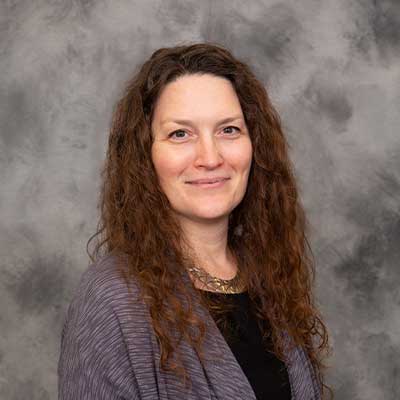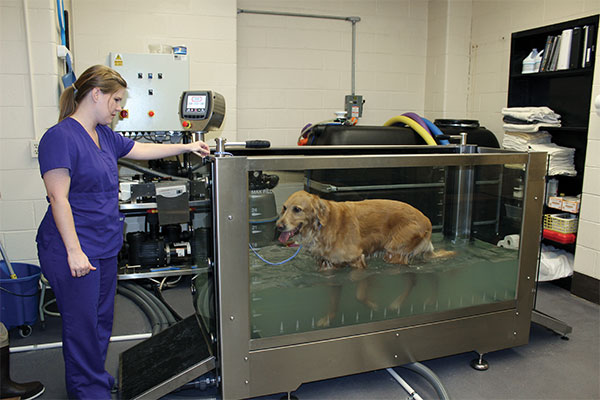PHYSICAL REHABILITATION
Our Expertise
Our Physical Rehabilitation Service is affiliated with our Integrative Medicine & Rehabilitation service. For humans, rehabilitation (physical therapy) has become a key component in the treatment of injuries and chronic diseases. In veterinary medicine, physical therapy and pain management are also considered very important for successful recovery after orthopedic surgery and neurosurgery. This may include hip surgery, stifle (knee) surgery, spinal surgery or trauma, or chronic pain, to name a few. Arthritis and obesity can also be helped by physical therapy. We take a combined approach to enhance muscle strength, range of motion, pain control, and speed of recovery.
Services
Diseases and Injuries Treated
Currently most of our patients are dogs with
- Cranial cruciate ligament disease
- Femoral head and neck resection (FHO)
- Hip dysplasia
- Fractures stabilized with casts or implants
- Osteochondrosis dissecans (OCD)
- Elbow dysplasia
- Osteoarthritis
- Obesity
- Coxofemoral, elbow, and stifle luxations
- Neuromuscular dysfunction due to intervertebral disc disease, spinal tumors, fractures, and degenerative myelopathy
Aquatherapy
Use of an underwater treadmill or swimming may be a part of the overall rehabilitation. Underwater treadmills provide buoyancy during exercise, increase muscle blood flow, and encourage joint movement while decreasing the stress. It can help with pain and swelling and provide a high resistance work-out. It is especially beneficial for dogs that have had spinal surgery and are unable to walk well.
Exercise Programs
Exercise programs can be tailored to increase the strength, endurance and performance of canine patients, both on an out-patient and in-patient basis.
Depending on the patient’s problem and general health status, therapy balls, treadmills, cavaletti rails, walking carts, and balance boards are utilized to enhance coordination, balance and muscle strength.
Pain Management
Pain management is an important aspect of rehabilitation. It may entail a combination of drug therapy, massage, therapeutic ultrasound, acupuncture, and/or spinal manipulation.
Hot and cold packing and passive range of motion exercises may be performed multiple times per day to prevent joint stiffness and postoperative pain. Therapeutic ultrasound (pictured below), neuromuscular electrical stimulation, and massage are other treatments.
What to Expect
-
Each patient is evaluated thoroughly before commencing rehabilitation.
-
Our rehabilitation technicians work closely with our orthopedic surgeons and integrative medicine specialists.
-
A rehabilitation program is tailored to each patient’s specific needs.
-
Regular evaluations during the rehabilitation period are used to assess the patient’s progress and to determine whether the program needs to be modified. This includes complete physical examination, the use of goniometry to measure joint angles, force platform analysis and measurement of muscle mass.
-
We will talk with you and give detailed instructions regarding the methods you can use at home between clinic visits and possibly in the long term.
Faculty and Staff
Faculty

Lorrie Hale Mitchell
DVM, MS, CTCVMP, CTCVM, CVTNP, CVCH, CVFT
Assistant Professor of Integrative Medicine and Rehabilitation

Kielyn Scott
DVM, CVA, CVH, CVTP
Clinical Assistant Professor of Integrative Medicine and Rehabilitation
Veterinary Technicians

Jennifer Bridges
MS, CCRP

Ines Cubino
DVM

Hali Mouiller
RVT
